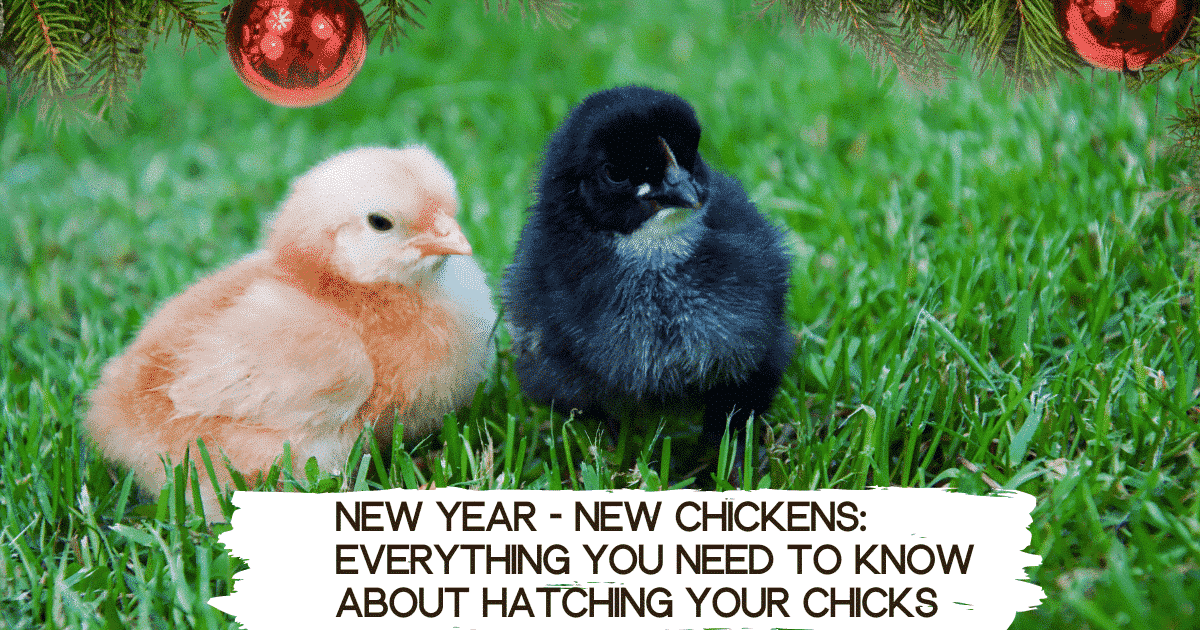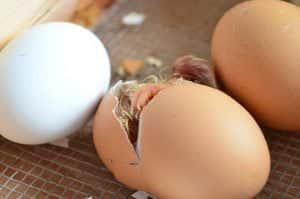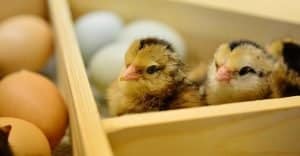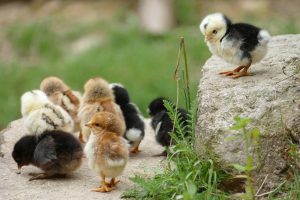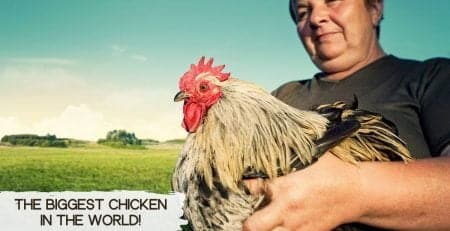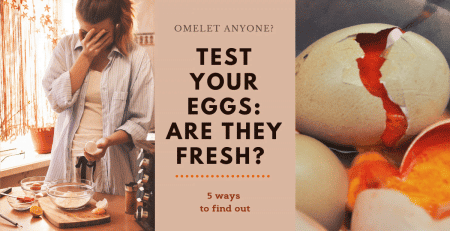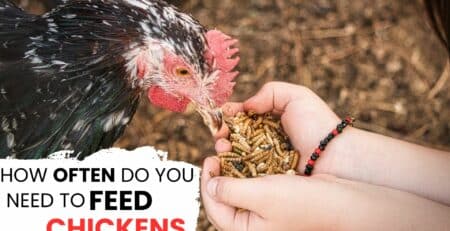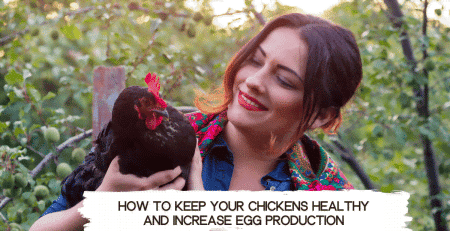A new year is a new beginning. It is like a new birth. You will be happy to find out that baby chicks are quite easy to raise. If you do not have any experience with artificial breeding, the following article will help you with the basics. You will thus find out what you have to pay attention to beforehand and during the brood, how you can tell that hatching is occurring and how this happens. You will also get a closer look at the points that have to be observed after brooding so that the chicks develop into healthy chickens.
Natural and artificial breeding
Breeding can be natural or artificial. The whole process takes a total of 20 to 21 days for the chicks to hatch in both artificial and natural breeding. But first, you need a rooster to fertilize an egg. In natural breeding, the hen ensures that her laying nest is in the right environment for her eggs to hatch, for hatching, and, afterward, for raising the little chicks. When the hatching time comes, she carefully chooses the place where she will nest. Hen plucks the feathers on her chest to warm offspring with body heat. She turns the eggs with her beak, doing so up to 50 times a day. Researchers have found that the mother chicken communicates with the chicks when they are still in the egg and creates a special closeness by gently tapping on the shell. “Good mothers” are especially Rhode Island Red, New Hampshire, Plymouth Rock, Cochins, and Silkies. When broody hens are not available, or large numbers of chicks are to be raised, artificial breeding is necessary. Chicks will perform equally well under artificial or natural breeding, providing they are precocial; that is, able to walk and feed themselves within hours of hatching, as baby chickens are.
Environment is the key
If you want the chickens to lay eggs you need to provide enough light, at least 14 hours a day, and enough space. Here are some other tips on how to help your chickens lay more eggs. Nest 12×12×12 In with soft bedding (shavings or straw) should be big enough for seven broody chickens. Put it in a place where they will feel comfortable. Chickens will know what to do next.
If you decide to try artificial breeding there are several precautions you need to take. First, make sure you have a constant temperature of 99.5°F and relative humidity of 50-55%. However, the optimum hatching temperature is not the same for all eggs. It depends on the size of the eggs, the quality of the shell, the breed, the age of the eggs, and the humidity during hatching. Second, if you don’t have a built-in mechanism for turning the eggs, you should turn manually 2-5 times a day up to the 18th day of incubation. Turning the eggs is important to prevent the embryos from sticking to the wall of the eggshell. Last but not least, make sure that fresh air circulates through space. When you have reached the 18th day, you no longer have to turn the eggs. Instead, place them on a hatching tray, where they have to rest for the remaining days until the chicks hatch. At the same time, increase the humidity to 65% and the temperature to 101°F. However, if you have a fully automatic incubator, it will regulate temperature and humidity on its own. Nevertheless, we advise you to check regularly that everything is working properly.
Some common reasons for poor hatching:
- unfertilized eggs
- rooster-hen ratio
- foot diseases (pododermatitis, arthritis)
- metabolic disorders-early interest (1-9 days)
- improper manipulation of hatching eggs before laying in incubators
- too high temperature in the first two days hatching
- too low humidity and temperature
- infections (E.coli, salmonella, Pseudomonas, …)
- chickens stuck to the shell (too low humidity)
- large-limp chickens (too high humidity, poor ventilation)
- spread legs (too high humidity)
When do the chicks hatch?
Chicks usually hatch on the 20th day of the brood. However, it can also happen that they hatch a day before or a day later, it depends on the breed of the chickens (and thickness of the eggshell) and the incubation temperature. If the temperature is set too high the chicks will hatch earlier. On the other hand, if the temperature is set too low, the chickens will hatch later.
How long does it take for the chicks to hatch?
As soon as you can see the first hole in the shell, you can be sure that the chick will be hatched. A good hatching position is when the upper body points to the air bubble that is inside the egg, the legs are close to the body, and the right-wing covers the head during this time. When the chick is ready to hatch, it will slowly pull its head out from under the wing. Usually, the grueling process takes 3 to 5 hours for the chick to fully hatch from the egg. But this is not always the case. Some hatching processes can last up to 24 hours. The reason for this is that the little chicks have to take a break from time to time to be able to gather new strength, as hatching is extremely strenuous for them. So, you shouldn’t worry if the chick takes longer or stops trying to get out of the egg in between. Some eggs also begin to move slowly. After chicks have finally hatched, they are wet and exhausted. They can stay in the incubator for up to 24 hours to dry out and recover. During this time, they are still supplied with the nutrients in the yolk sac. The next day you can put them in a special chick pen.
How do I react if the chick does not come out of the egg?
Occasionally you may see that the egg has been picked but the chick will not come out of the egg. They’re stuck and the reason for this is the humidity. It was probably set too high during the entire brood, which means that not enough of the egg content has evaporated. As a result, the air bubble in the egg is too small and the chick has too little oxygen during hatching. In addition, the egg skin dries on the chick, which means that it does not come out of the egg with either turning or turning. Usually, you shouldn’t help the chicks hatch, because the intervention prevents them from fully pulling in the yolk sac. But if you are sure that the chick is stuck in the egg, you should try to help. Interventions should also be made in the case of malformations and deformities of hatched chicks to spare the little ones any agony.
The chicks have hatched – what happens now?
The chicks do not have high demands on their chick home. However, they need a few things to develop well:
- Warmth is very important. For this, you need a heat lamp or another heat supplier.
- No drafts on the coop.
- Always fresh water in a small bowl so that they don’t drown.
- High-quality chick food (consists of a lot of protein).
- A clean chick home so they don’t get diseases.
If you make sure the little ones have everything they need, they will feel good and develop into healthy chickens after 8 weeks. Now you can put them in their new home with the other chickens. Make sure they stay safe from predators by protecting them with the automatic chicken coop door. If you want to name them, here are some cute, funny, and famous names for chickens.

